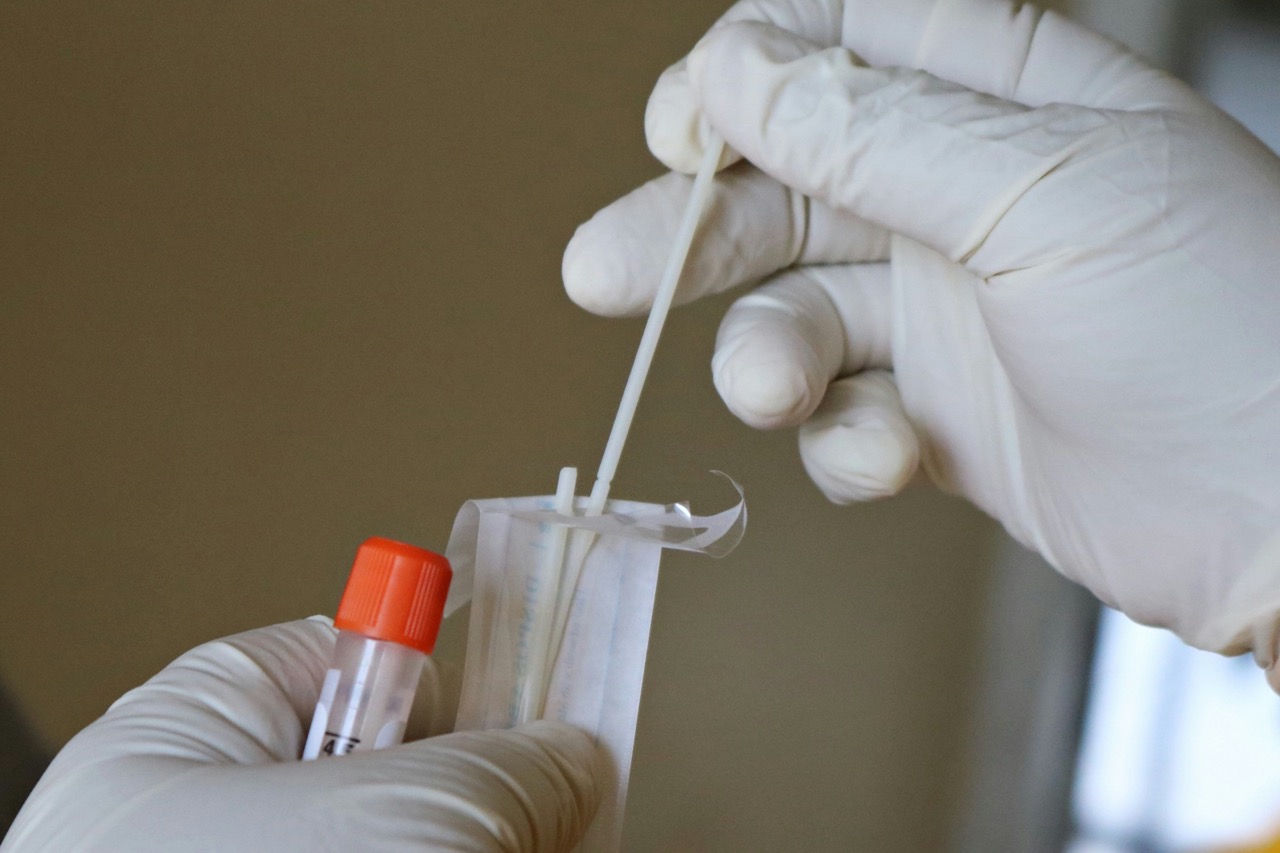Sexually transmitted diseases (STDs) pose a significant public health challenge worldwide, with millions of new infections reported annually. Understanding how STDs affect men and women differently is crucial for tailoring prevention and treatment strategies. This article aims to delve into the gender-specific dynamics of STDs, exploring biological, social, and psychological factors contributing to disparities in prevalence, diagnosis, and treatment. By shedding light on these differences, we hope to enhance awareness and inform public health interventions aimed at reducing STD transmission across all genders.
The impact of STDs on individuals can vary widely based on gender. Men and women may experience different types of infections at different rates, influenced by anatomical, physiological, and social factors. Recognizing these differences is essential for effective public health planning and resource allocation. In this discussion, we will cover common STDs, the implications of biological differences, variations in immune responses, and the social behaviors that often contribute to increased risk. Furthermore, we will examine how symptoms manifest differently, the disparities in healthcare access and treatment, and the stigma associated with STDs, which can differ between genders.
Overview of Common STDs: Prevalence in Men and Women
The prevalence of STDs varies between genders, with some infections being more common in men and others in women. For instance, epidemiological studies indicate that men are more likely to be diagnosed with syphilis and gonorrhea, while women typically have higher rates of chlamydia and human papillomavirus (HPV). This variation is influenced by both biological susceptibility and social behaviors that differ between genders. For example, men often engage in riskier sexual practices, which may contribute to their higher rates of certain infections.
Additionally, the long-term complications associated with STDs can differ by gender. Women are at an increased risk of developing severe complications from untreated STDs, such as pelvic inflammatory disease (PID) and infertility. Conversely, men may suffer from urethritis and epididymitis, but the long-term consequences are often less severe in terms of reproductive health. Understanding these patterns is vital for both prevention and treatment efforts, as targeted interventions can be developed to address the specific needs of each gender.
Biological Differences: How Anatomy Influences STD Risk
The biological differences between men and women play a pivotal role in the transmission and progression of STDs. Men’s anatomy, characterized by external genitalia, often allows for easier transmission of pathogens through contact with bodily fluids. Conversely, women’s internal reproductive structures may create a more favorable environment for certain infections, such as bacterial vaginosis and yeast infections, making them more susceptible to STDs. Additionally, the vaginal microbiome differs significantly from the male urethra, influencing how infections manifest and progress.
Hormonal factors further complicate the picture of STD risk. Fluctuations in estrogen and progesterone levels can affect the vaginal flora and immune response, potentially increasing vulnerability to infections during specific menstrual cycles. Furthermore, women’s immune systems generally respond differently to infections than men’s, with higher levels of certain immune cells present in females. These biological complexities highlight the need for gender-specific approaches in the prevention and treatment of STDs.
Immune Responses: Gender Variations in Disease Resistance
Research indicates that there are notable differences in immune responses between men and women, which can influence susceptibility to STDs. Women often exhibit a stronger and more effective immune response, particularly in the context of viral infections. This heightened immune response is thought to be linked to genetic and hormonal factors, such as the protective effects of estrogen. Consequently, women may be able to clear certain infections more effectively than men, which can impact the overall prevalence of STDs within populations.
However, this does not mean that women are less affected by STDs. The biological mechanisms that confer protection can sometimes lead to delayed recognition and treatment of infections. For example, while women may have a robust response to HPV, they can still develop serious complications, such as cervical cancer, if the virus remains untreated. Similarly, men’s immune responses may be less effective in combating certain infections, leading to a higher rate of symptomatic disease. These differences underscore the importance of considering gender in the development of vaccine strategies and treatment protocols.
Social and Behavioral Factors: Risky Practices by Gender
Social and behavioral factors significantly influence the risk of STDs, with patterns of sexual behavior differing between men and women. Men are often more likely to engage in multiple sexual partnerships and exhibit riskier sexual behaviors, such as inconsistent condom use. This can lead to a higher incidence of STDs among men, as they may be more exposed to infected partners. Furthermore, societal norms often encourage men to adopt a more permissive attitude toward sexual activity, which can further exacerbate the risk.
In contrast, women may face societal pressures that influence their sexual behavior, such as expectations around monogamy or stigma associated with sexual health discussions. This can result in a reluctance to seek testing or treatment, ultimately leading to higher rates of untreated infections. Additionally, women may be less likely to negotiate safe sex practices due to power imbalances in sexual relationships. Tailoring educational and intervention programs to address these gender-specific behavioral factors is crucial in reducing STD transmission rates.
Symptoms of STDs: Gender-Specific Manifestations Explored
The symptoms of STDs can manifest differently in men and women, leading to varied experiences of illness. Men often experience acute symptoms, such as burning during urination and discharge, which can prompt them to seek medical attention more rapidly. Conditions like urethritis and genital herpes are typically easier to diagnose in men due to the visible nature of symptoms. However, many STDs can remain asymptomatic in men, allowing infections to spread unknowingly.
Women, on the other hand, may experience subtle or non-specific symptoms that can be easily overlooked. Common indicators, such as abnormal vaginal discharge, pelvic pain, or irregular menstrual cycles, may be dismissed as normal variations in health. This can delay diagnosis and treatment, increasing the risk of complications. Moreover, certain infections, like chlamydia and gonorrhea, can be asymptomatic in women, further complicating efforts to control transmission. Recognizing these gender-specific symptomatology is essential for promoting timely testing and treatment.
Diagnosis and Screening: Gender Disparities in Healthcare
Gender disparities persist in the diagnosis and screening of STDs, with women often facing barriers to accessing reproductive healthcare services. Women may be less likely to receive routine screenings for STDs, particularly in settings where reproductive health services are limited. This can lead to delayed diagnoses and treatment, contributing to complications such as infertility. Additionally, the stigma surrounding sexual health can deter women from seeking necessary care, perpetuating cycles of untreated infections.
Men also face challenges in STD diagnosis, albeit different ones. Many men may feel embarrassed or uncomfortable discussing sexual health issues with healthcare providers, leading to underreporting of symptoms and lower rates of screening. Moreover, public health campaigns often emphasize women’s health, potentially overshadowing the importance of male engagement in STD prevention and treatment. Addressing these disparities requires targeted healthcare outreach to encourage both men and women to prioritize regular testing and seek treatment when necessary.
Treatment Approaches: Are They Gender-Sensitive?
Treatment approaches for STDs can vary based on gender, reflecting both biological differences and social factors. In many healthcare settings, treatment protocols are often developed with a one-size-fits-all mentality, potentially overlooking the nuances that exist between genders. For instance, women’s treatment options for certain STDs may be influenced by reproductive health considerations, such as pregnancy or hormonal contraceptive use, necessitating a more tailored approach to management.
Furthermore, psychological factors play a role in how individuals respond to treatment and adhere to prescribed regimens. Women, for example, may experience feelings of guilt or shame associated with STDs, which could affect their willingness to seek treatment or follow through with recommendations. Conversely, men may exhibit a reluctance to engage with healthcare systems due to perceived stigma. Therefore, it is crucial for healthcare providers to adopt gender-sensitive treatment strategies that consider these psychological and social dynamics to enhance patient outcomes.
Psychological Impact: STDs and Gender-Specific Stigma
The psychological impact of STDs is profoundly influenced by gender-specific stigma, with both men and women facing unique challenges. Women often experience heightened feelings of shame and guilt, which can stem from societal attitudes that associate sexual health issues with moral failing. This stigma can hinder their willingness to discuss symptoms or seek care, thus exacerbating health disparities. Furthermore, women may face additional pressure regarding fertility and reproductive health, which can heighten anxiety surrounding STD diagnoses.
Conversely, men may encounter stigma related to perceptions of masculinity and virility. The notion that men should be sexually assertive can create a reluctance to acknowledge vulnerabilities associated with STDs. This can lead to avoidance of testing and treatment, perpetuating a cycle of infections. Both genders can internalize societal stigma, leading to mental health issues such as anxiety and depression. Addressing these psychological impacts through supportive counseling and public health campaigns is essential for improving health outcomes and reducing stigma.
Prevention Strategies: Tailoring Approaches for Each Gender
Effective prevention strategies for STDs must consider the unique factors associated with each gender. For women, comprehensive sexual education should address not only the biological aspects of STDs but also the social pressures that may influence sexual behavior. Programs that promote communication skills and empower women to negotiate safe sex practices can significantly enhance prevention efforts. Additionally, increasing access to routine screenings and making reproductive health services more available are critical for reducing incidence rates among women.
For men, prevention strategies should focus on promoting responsible sexual behavior and reducing stigma around seeking healthcare. Public health campaigns that challenge traditional notions of masculinity and encourage open discussions about sexual health can facilitate greater male engagement in STD prevention. Furthermore, targeted outreach efforts in communities with high rates of STDs can help to raise awareness and provide resources for testing and treatment. Tailoring prevention approaches to address gender-specific needs and challenges is crucial for a comprehensive response to the STD epidemic.
Public Health Implications: Addressing Gender Disparities
The recognition of gender disparities in STD prevalence, treatment, and stigma has profound public health implications. Addressing these disparities requires a multifaceted approach, including policy changes, improved access to healthcare, and targeted education and outreach efforts. Public health organizations must prioritize gender inclusivity in their initiatives, ensuring that both men and women receive equitable access to prevention and treatment services.
Additionally, integrating gender-sensitive perspectives into public health research can help to identify and address gaps in knowledge and service delivery. For instance, exploring the effectiveness of various educational strategies across genders can inform program development and implementation. By addressing gender disparities in STD prevention and treatment, public health efforts can ultimately lead to improved health outcomes for all individuals, regardless of gender.
Understanding the differences in how STDs affect men and women is essential for developing effective public health strategies and improving individual health outcomes. By recognizing the biological, social, and psychological factors that contribute to these differences, we can create more inclusive and effective interventions. As public health campaigns evolve, they must prioritize gender-specific approaches that address disparities in risk, diagnosis, treatment, and stigma. Promoting awareness and education around STDs in a gender-inclusive manner will not only empower individuals to take charge of their sexual health but also foster a more informed community that values equitable access to healthcare for all.











